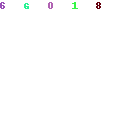
The Challenges of Building an Art Market in Russia: It’s Not Just About the Money
Ekaterina Drobinina
24/04/2015
“The Russian art market cracked in 2009”, - I'm told by an art collector who is equally interested in the works of both the Russian avant garde artists and the non-conformists, some of which he knows personally.
The financial crisis of 2008-2009 has indeed seriously affected the fragile Russian art market. But less money being spent on works of art was not the only problem. In 2012, three well-established galleries, with both a long history and a reputation on the international stage – Aidan gallery, XL and Marat Guelman’s gallery – either closed or became non-commercial spaces. Art Moscow, specialising in contemporary art, held its last art fair in 2013.
However, some experts would argue that the collapse of the market during the crisis could have been less dramatic had there been a more solid art market infrastructure (museums, art fairs, etc.) and more loyal customers.
Some of these specialists believe that an art market is considered to exist only when art becomes popular among middle-class customers. However, not many can agree on how to define the middle-class in Russia. Also, the notion of “affordable art” is yet unknown to the majority of Russian collectors.
“In Europe, almost everyone buys art: lawyers, doctors, even notaries. In the US, in the 1980s art was a status symbol, and it made one group of people – those who owned art – stand aside from all the rest”, - says Emanuela Campoli, owner of Campoli Presti, a gallery that participated in Cosmoscow, an art fair for contemporary art that took place for the second time in Moscow in 2014.
Read in Archives: Interview with Russian art collector Nikolay Blagodatov
“In Russia, you still have the tradition of building a collection, but most people prefer to buy 'brands'”, - explains Campoli. She adds that her Russian clients admit that when buying Russian art, they are not going after a brand name, but are trying to support the artist.
“Blue chips” on the Russian art-market (i.e., the works which cost a lot today and are unlikely to become any cheaper in the near future) are Goncharova, Aivazovsky, Serov, Roerich, Lentulov, Vereschagin, Mashkov, and Annenkov, among others. Russian emigrants, such as Chagall, Kandinsky and Rothko, are never sold during the Russian sales. Their works are reserved for prestigious modern art sales that attract international collectors, and accordingly, are sold at much higher prices than those shown at the Russian week sales.

Grisha Bruskin. “Fundamental Lexicon”
Nonconformism – contemporary Russian art that originated under the Soviet regime in opposition to the official, state-sanctioned style of social realism – rarely comes up for sale today at major international auction houses. Back in 1988, Sotheby’s organized the first international auction that ever took place in the Soviet Union. It offered works by popular nonconformist and avant garde artists raging in price from 2,800 dollars per piece, to the most expensive – half a million for a work by Rodchenko. A record $412,240 was paid for “Fundamental Lexicon” by Grisha Bruskin, which was the highest price ever for a work by a contemporary Soviet artist.
Most of these prices came as a surprise for the artists themselves. However, some gallerists believe that even though a certain amount of nonconformist art was purchased for the purpose of including it into a collection, in some cases customers regarded the Soviet art as a “souvenir”. Today these works can be found in attics, covered with dust.
Nowadays contemporary Russian art is sold at Vladey Auctions, founded by businessman and passionate art-lover Vladimir Ovcharenko, who used to run two Moscow- and one London-based galleries (his Regina Gallery is the only one that remains open in Moscow today). Nonconformists are affordable to many collectors – depending on the artist, prices vary from several hundred to a couple of thousand euros. For example, during the sales last autumn, only a few works exceeded a hammer price of 10,000 EUR.
Apart from Vladey, most of Russia's auction houses (with a headcount of slightly over 20) sell antiquities, stamps and coins. Major international auction houses do not have sales in Russia. The buying of Russian art that dates back 100 years or more can be accompanied by legal challenges set in the country’s legislation – that is, if the owner decides to move it out of the country.
Opening a gallery in Russia can be challenging and costly, too, partly because of the lack of both sufficient infrastructure and government support. For example, interest-free loans given to buyers in the Netherlands and Great Britain – specifically for the purchase of art from in-country galleries – helped to develop the market in these countries; the state supported all of the important market players: the artists, galleries and collectors. In some countries, the government pays for sellers to participate in international art-fairs. And lastly, state authorities can promote their national art market simply by showing an interest in the art industry – as they do in Spain, where ArCo, a Madrid-based art fair, is attended by members of the Royal family.

The Garage Museum of Contemporary Art, scheduled to open on June 12, 2015. Courtesy of OMA
However, the situation is not all gloom and doom. Despite financial challenges and a lack of solid infrastructure, there has been a certain degree of development in Russia's art market: a new buildingfor the Garage Museum of Contemporary Art is set to open in summer 2015; the Hermitage Museum is planning to expand into Moscow; and several collectors are planning on building private museums in which to show their collections. Art fairs are being organized on a different, more professional level, and they are attracting more educated art-lovers – as opposed to the nouveaux-riches who buy art only to impress their guests.